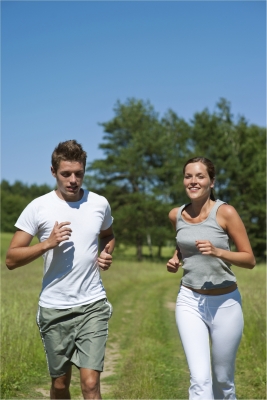Injuries to the Achilles tendon are extremely common. Not only are they often quite painful but they can also be very debilitating and put a person out of participating in their favourite sport/physical activity for quite a while.
The following are a few tips on returning to sport after an Achilles tendon injury. Please note these tips are only general and are not a substitute for seeing a trained health professional. If in doubt about the severity of an injury, you should see your doctor or physiotherapist for an assessment.
First of all what are tendons? Tendons are the strong fibres that connect muscles to bones. Tendons are made primarily of collagen. The Achilles tendon is the thickest in the human body. It attaches from the calf muscles (plantaris, gastrocnemius and soleus) to the heel bone (calcaneus).
Tendonitis vs. Tendinosis.
These two terms are often mistaken for one another – yet they describe two very different things.
- Tendonitis: this describes specifically inflammation of the Achilles tendon.
- Tendinosis: this refers to micro-tears of the tendon.
The term tendinopathy is now commonly used, as it encompasses both inflammation and micro-tears.
One symptom may commonly accompany the other and it is not always clear which was present first. In many cases the treatment options may overlap. However, it is still important to have an idea of what is causing the pain, so as to prescribe treatment that is specific to the issue. For example: anti-inflammatory medication will be of little use when there is no inflammation actually present.
What are the causes?
These injuries are typically caused by overuse, especially in sports where a significant amount of running or other repetitive tasks are required. Usually the onset is gradual – commonly described as ‘wear and tear’.
Common causes are: over-training, tight Achilles tendon (sometimes associated with a high foot arch), flat (over-pronated) feet, tight hamstrings or calf, poor footwear, hill running or poor eccentric strength (the strength required to control the movement of running downhill for example).
Treatment.
A thorough treatment program is the best way to prevent recurrence of this issue. Returning to sport too quickly will mean that the problem is likely to linger until enough rest and proper rehabilitation measures are undertaken.
Initial recovery, depending on the severity of the injury, should involve some elements of the RICE protocol – Rest, Ice, Compression and Elevation. This is to reduce the load being placed on the injury and begin to reduce the inflammation that may be present. The RICE protocol is typically followed for 48 hours.
In order to speed up the recovery process other treatment modalities are often used. These often include ultrasound, electrotherapy, SCENAR therapy, heat packs and soft tissue massage. Make sure though that you don’t use heat packs or soft tissue massage in the first 48 hours following the injury.
Once the initial pain and inflammation are under control the focus will shift towards a specific exercise program. This is a crucial step in the recovery purpose. While the treatment methods described above will help to reduce the symptoms, the only way to maintain the results and reduce the risk of sustaining the same injury in the future, is to do specific strengthening and range of motion exercises.
What types of exercises are generally prescribed?
A lot of people think as follows: I have injured my Achilles tendon, so naturally I need to work on my ankle. True? Yes, up to a point but this statement needs additional clarification.
Over the years we have helped many patients who have sustained Achilles tendon injuries. We always explain that focusing on the ankle alone will not achieve optimal results. It’s crucial to work on the whole kinetic chain, i.e. your pelvis, hips, knees and ankles. Why? Think of the following scenario: you have an old sports injury which has affected your hip. While you might no longer notice this much, now that you also have an injured Achilles tendon, the weakness of the hip will exacerbate the problem as more load will be going through the ankle. Hence by strengthening the hip, the additional load going through the ankle will be reduced.
Your exercise program must address not only the Achilles tendon but also your core, hips and knees.
Specific Achilles exercises include the following:
- Strengthening: slowly building up the strength of the calf muscles, including eccentric strengthening (typically performed by lowering the heels off the edge of a step)
- Range of motion exercises: improving the mobility of the ankle; stretching is often part of such exercises
- Balance and proprioception exercises: improving the balance and the awareness of the joint in space; this makes you less likely to sustain the same injury in the future

